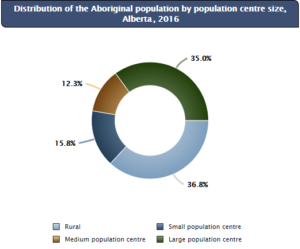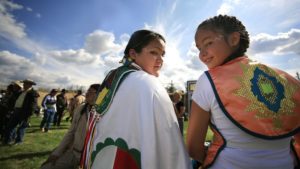Alberta is home to the third largest Indigenous population in Canada. It is critical to support the unique social determinants of health for Indigenous peoples by learning from our history of colonialism, implementing recommendations from the Truth & Reconciliation Commission Report, and creating culturally safe health care. Click the expandable menu below for individual articles about the factors that influence the health of Indigenous Albertans and the ways health care is transforming to meet their needs.
Indigenous Peoples in Alberta
According to the 2016 census, approximately 260,000 Albertans identify as Indigenous, which is 6.5% of the population. Indigenous peoples is a broad term that includes First Nations, Metis, and Inuit. In Alberta in 2016, approximately 53% of Indigenous peoples were First Nations people, 44% were Métis, and 1% were Inuit.
Within Treaty 6, 7 & 8, which overlap the geographical boundaries of Alberta, 45 First Nations are represented. There are 140 reserves that cover approximately 812, 771 hectares of land. The most commonly spoken First Nation languages are Blackfoot, Cree, Chipewyan, Dene, Sarcee, and Stoney.
Indigenous Albertans live in all areas of the Province. According to the 2016 census, the majority of Indigenous peoples live in smaller population centres and rural settings (52.6%) and nearly 56.1% of First Nations peoples live off reserves.

Indigenous youth are the fastest growing population in Alberta. In 2016, the proportion of Indigenous peoples aged 15–24 was 23.7%, compared with 15.2% of Albertans in general in this age range. The proportion of Indigenous peoples aged 25–54 was 58.1%, while the proportion of Albertans for the same age group was 55.6%. This population is a major social force and resource for the Alberta economy.

